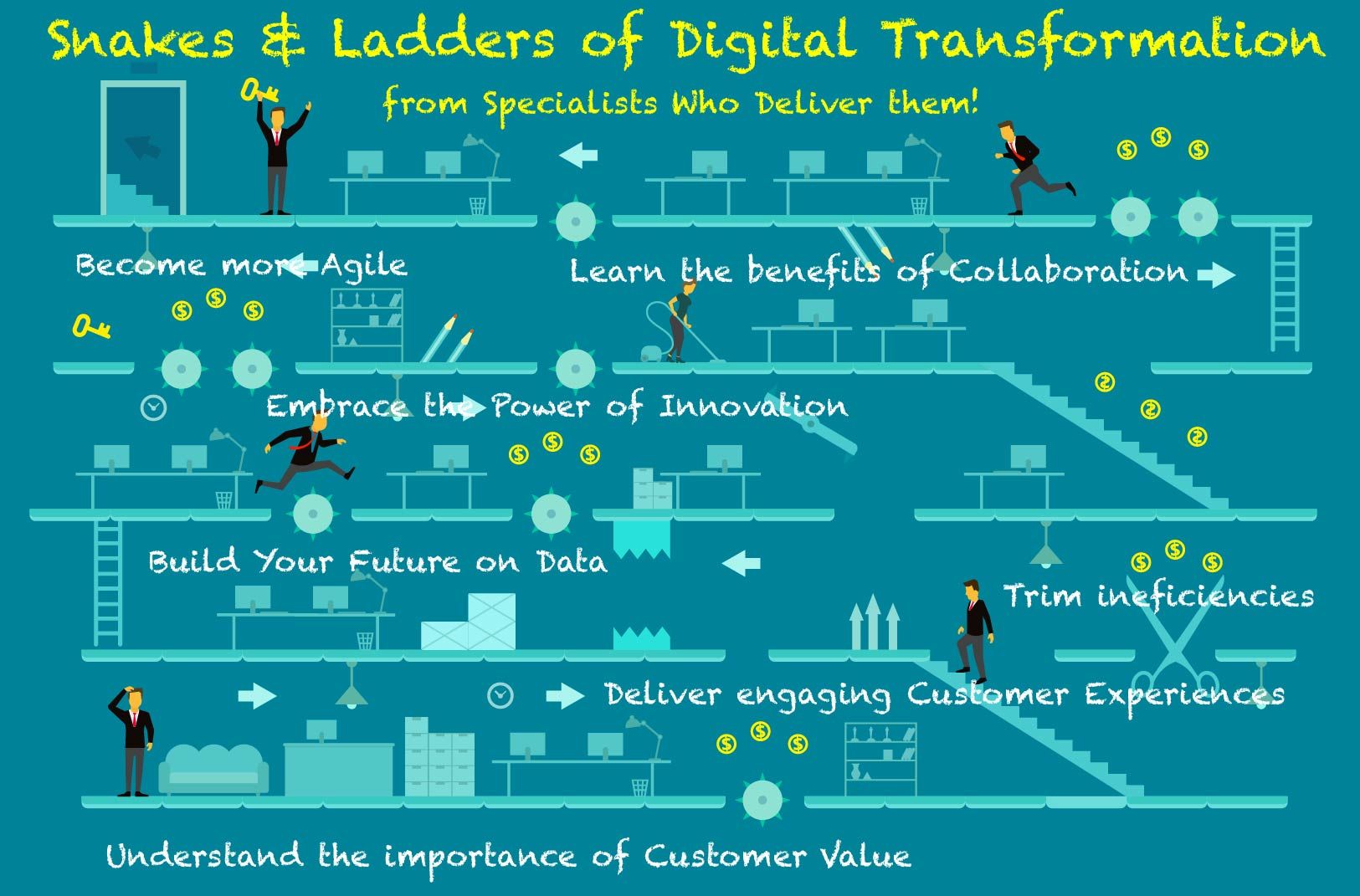Blog Layout
4 Stages of Digital Transformation – Where Are You?
4 Stages of Digital Transformation – Where Are You?

No matter how we investigate where we are in the process, it remains a fact that digital transformation needs to be taken seriously, as it can often be the main driver of competitiveness. Knowing exactly where you are during the 4 stages of digital transformation, as you strive to build meaningful digital products and services, may be the best way for your business to survive.
Where are you?
Understanding where you are may be brutal at times but if you don’t care, no one else is going to either. Doing an honest self-assesment is the best way to get there. One of the key evaluations in this process is to understand both what your approach towards IT is, and where exactly you sit on the digital transformation ladder. Failing this approach, a blank canvass can be a good, but expensive approach.
Has transformation started, or are you just ‘keeping-up’? The majority of organisations are only dealing with digital transformation on a project-by-project basis, with no overall strategy. Perhaps this is better than no approach at all, but knowing that it has been said before, these four stages of digital transformation can help you understand where you are. Understanding your resistance to change.
Digital Resister
A Digital Resister has IT initiatives that are poorly aligned to strategy and not focussed on customer experiences. These IT initiatives are seen as something that must be done as a necessary evil, they will have low levels of capability for IT in-house and across the organisation the focus will be on fixing rather than replacing broken systems (and similarly processes). At no point will the organisation think to drive value through technology (and processes together), making the need to challenge and disrupt the Culture imperative.
Digital Explorer
The largest group where most organisations find themselves is without a doubt the Digital Explorer. Transformation here is accepted as a part of of everyday business, is written into the strategy somewhere, and is dealt with on a project-by-project basis. Organisations definately give themselves an ‘A’ for effort here. Each projects success is celbrated with fanfare, and used as the motivation to campaign for the ‘next-project’.
Digital Player
A close second to the Explorer group is the Digital Player. This group of organisations accounts for around one quarter of those trying to embrace this change. IT and business goals are going to be clearly defined as far as their digital products and services are concerned. The implementation of these goals will be active and clearly aligned, with many digital products and services being delivered, however, the disruptive potential has not been fully understood yet. They are close, but for one reason or another, they either don’t understand the power of disruption, or they just can’t see it yet.
Digital Disruptor
Our Digital Disruptors are the most important and by far the smallest segment of organisations. They embrace technology by building their business on data, with a robust platform, scalable architecture, intelligent workflows, an agile approach and most importantly their talent is empowered. They deliver effective and emotional customer experiences, focus their operations on things the customer values, can accelerate through their scalability (robust platforms and partnerships), and innovate through the convergence of experiences and operations that translate to organisational efficiencies.
What’s next?
Ok, so now that you are able to work out your starting point, you have to meticulously plan your digital transformation.
Deliver more engaing customer experiences through our products and services. Ask yourself, do I understand my customer journey, do I know what is important to them, and most importantly do I have the data to build this interaction. Is my data relevant, is it accurate, can I use it to transform their experience. Or do I need something else.
Am I able to support their needs. What is important to them, what do they value in this journey, and what bridges of support do I need to build to deliver effective and emotional experiences. Are we challenging the way we do business, by trying new things. Again do I have the data to support this, and am I using it properly.
Cloud computing being what it is these days allows us to build robust platforms and relationships. It allows us to adapt our business quickly, as the needs of our customers change. Do we understand this technology and are we embracing it. Are we empowering our organisation to maximise this potential. If not, how do we go about it.
The last part of our self-exploration journey needs to explore how we are creating and innovating in our business. Understanding and engaging with our customer journey and experience, is critical in allowing us to define successful organisational efficiencies. Welcoming this convergence of experience and operations will empower our innovation, completing the cycle.
Wherever you are in the 4 stages of digital transformation journey or wherever you think you are, perhaps you need to start to collaborate with innovative, creative, disruptive experts that are willing to engage with you every step of the way.
4 stages of Digital Transformation – where are you? Get started, build it on data, collaborate!
Learn more about the FranklyWeird Filter on – filter@franklyweird.com
Other Business Insights from FranklyWeird Digital

by Gregory Weir
•
5 August 2022
As we already know, doing a core banking transformation or migrating to a cloud environment will help to improve our operational performance, workload scalability, security & time-to-market (CICD). We need to exploit every advantage we can in order to stay competitive.

by Gregory Weir
•
15 May 2020
Until a few months ago digital transformation was a ‘nice-to-have’, with many of us working on various digital initiatives both in the workplace and at home. Today as we slowly come to terms with the fact that things are never probably going to be exactly the same, and in order to survive and for that matter thrive, business leaders are going to have to quickly realise that the digital transformation ‘want’ has to become a ‘need’.

by Gregory Weir
•
28 January 2020
Simply put, Digital transformation is a journey, not a destination. It introduces a new way of thinking and a new way of working. Whether we embrace it or not, it is an unstoppable movement that is constantly changing and evolving. Empowered by technology, people, experiences, values, data, and innovation it is important for us to understand how it works.
